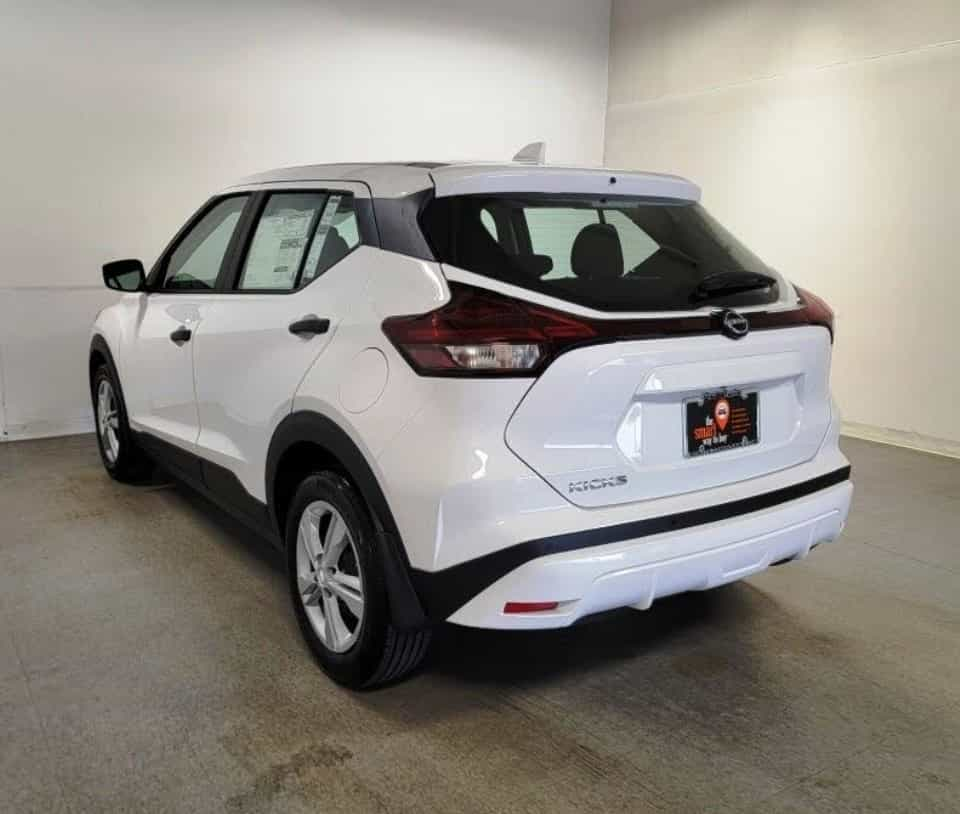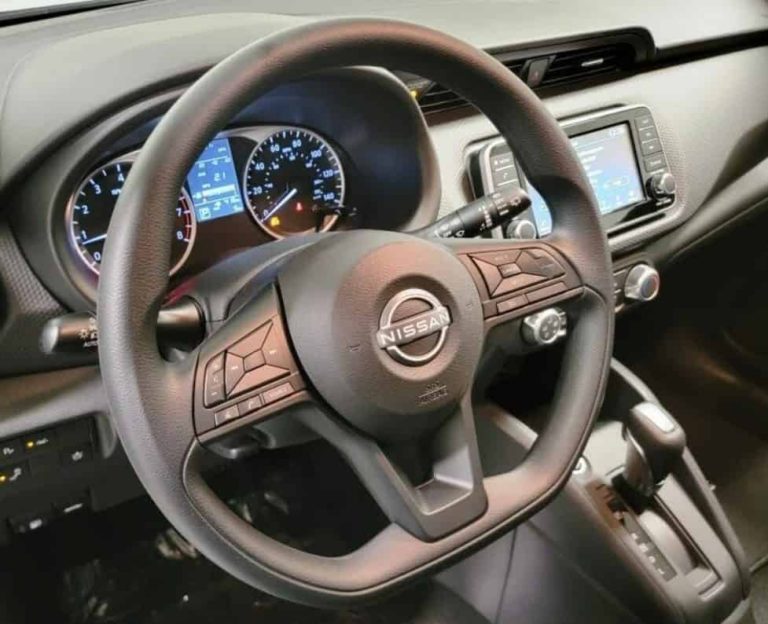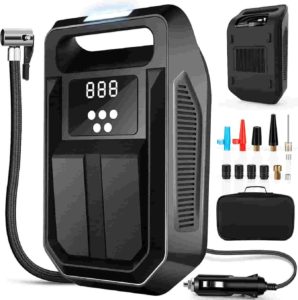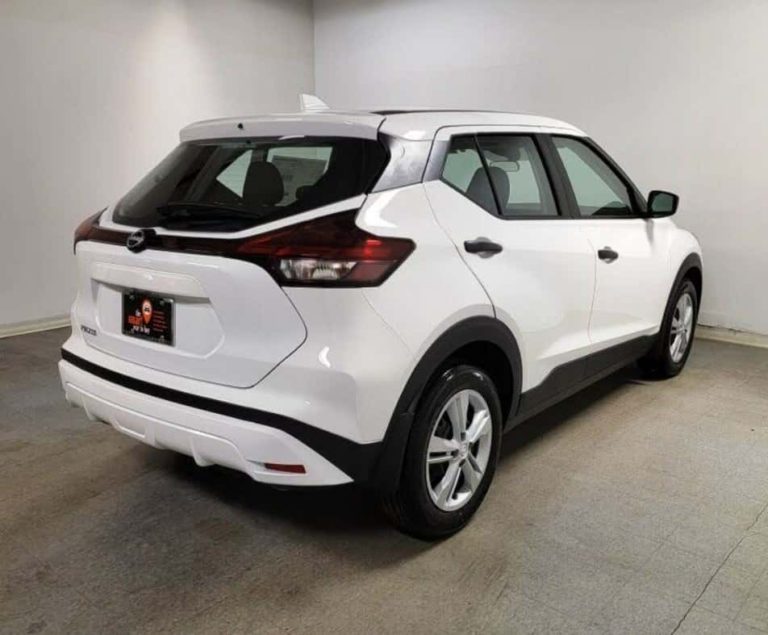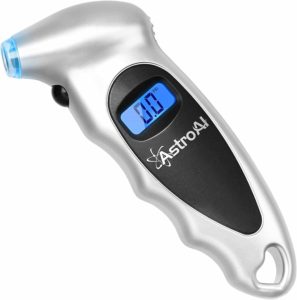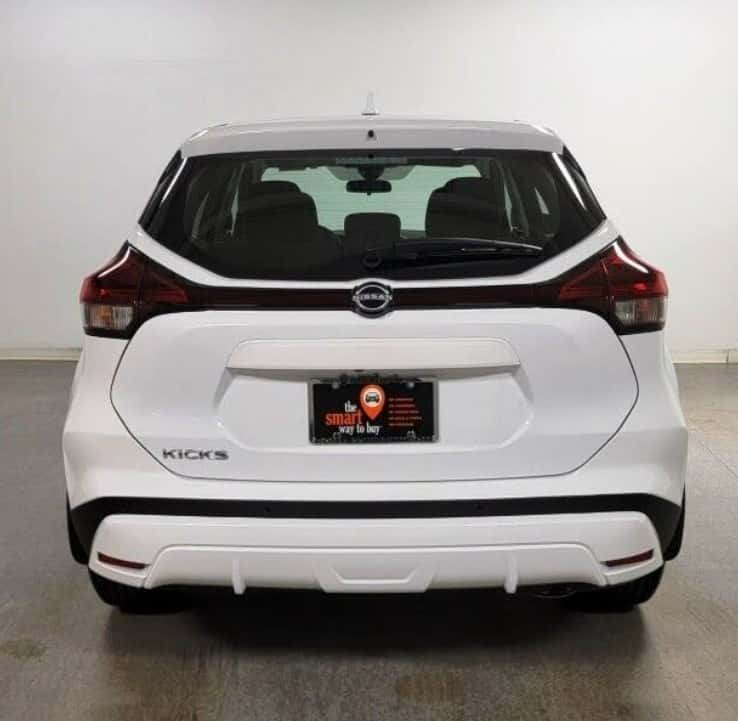Introduction to Nissan Kicks TPMS
Welcome to the ultimate guide on how to reset the tire pressure light in your Nissan Kicks! This comprehensive article will walk you through the process, explain the technology behind the system, and provide tips to ensure your tires are always at their optimal pressure. Whether you’re dealing with a persistent tire pressure light or just want to understand your vehicle better, this guide has got you covered. Let’s dive in and demystify the Nissan Kicks’ tire pressure system!
Steps to Reset Nissan Kicks Tire Pressure Light
The Nissan Kicks does not have a tire pressure reset button. It has what is called “Easy-Fill Tire Alert” which provides you with audible and visual signals while inflating your tires.
Park your Kicks in a safe and level place.
Apply the parking brake and put the SUV in Park.
Put the ignition to the ON position. This means engine off, electricity on.
Check and adjust your tire pressures. As you start adding air, the hazard indicators will start flashing.
Once the correct amount of air has been reached, the horn of your Kicks will beep once and the hazard indicators will stop flashing. Be exact, fill your front and rear tires to exactly 32 Psi.
Repeat the same steps for every tire. (if the tire is overinflated by more than 4 Psi, the horn will beep and the hazard indicators will flash 3 times, release some air.)
After adjusting the tire pressure, drive the vehicle at speeds above 16 MPH (25 km/h). The low tire pressure warning light does not automatically turn off when the tire pressure is adjusted. Once the Kicks reaches 16 MPH (25 km/h) or more, the light will turn off.
If the low tire pressure warning light flashes for approximately 1 minute and then remains on after you turn the ignition switch to the ON position, the TPMS is not functioning properly. (read more about TPMS malfunction below)
If the light doesn’t go off right away, re-check your tire pressure to make sure they are all at the exact pressure you set them to. If the pressure has decreased, you probably have some sort of leak in that tire.
If your tires are not losing air and the tire light still won’t go out, overfilling your tires by about 10 Psi might wake up your sensors. So, overfill them and then drive the Kicks for a few minutes. The tire light should reset. Remember: DO NOT leave the tires at this level, release the extra 10 Psi afterwards.
NOTE: Your TPMS will not reset and turn off the low tire pressure warning light until the tire pressure is set to the recommended pressure and the vehicle is driven at speeds above 16 MPH (25 km/h). If you’ve completed these steps and the tire light STILL won’t go out, There is only one of three things that can be the problem. Either have a faulty tire pressure sensor in one of your wheels OR you have a leak OR your receiver module (control unit) is not communicating with your sensors (this is the least of all likely and is rare).
2023 Nissan Kicks Tire Pressure and Size
TIRE SIZE | FRONT PSI | REAR PSI |
205/55R17 | 32 | 32 |
205/60R16 | 32 | 32 |
SPARE TIRE | 60 | 60 |
Nissan Kicks Tire Settings
How to Reset the Tire Maintenance Light
After rotating your tires, you need to reset the system. You can do this through the vehicle information display settings in your dashboard.
Navigate to the “Settings” option, then select “Vehicle Settings.”
Scroll down and select “Maintenance,” then choose “Tire.”
Select “Reset” to reset the system.
How to Change Tire Pressure Units
Press the “MENU” button on the control panel to bring up the main menu on the vehicle information display.
Use the toggle switch to navigate and highlight the “Settings” option, then press the “OK” button to select it.
In the “Settings” menu, navigate and highlight the “Tire” option, then press the “OK” button to select it.
In the “Tire” menu, navigate and highlight the “Pressure Unit” option, then press the “OK” button to select it.
You can now choose between “kPa” and “psi” units for tire pressure. Use the toggle switch to navigate and highlight your preferred unit, then press the “OK” button to select it.
How Does the Nissan Kicks TPMS Work?
Sensors
Each tire in the Nissan Kicks (including the spare if equipped) houses a sensor. These battery-powered devices measure tire pressure and temperature, transmitting data only when the tire is in motion (using an accelerometer) to conserve battery life. Each sensor has a unique identification code, allowing the TPMS control module to differentiate between them.
Data Transmission
The sensors wirelessly transmit tire pressure and temperature data to the TPMS control module. This transmission is activated by the motion of the Kicks, ensuring the most relevant data is sent.
TPMS Control Module
The TPMS control module, or receiver, is the system’s hub. It receives and decodes data from the sensors before forwarding it to the onboard computer system. It also monitors each sensor’s status, triggering a fault code if a sensor stops transmitting data.
Onboard Computer/ECU
The Electronic Control Unit (ECU) processes the data received from the TPMS control module. If it detects tire pressure below the predefined threshold, it activates the TPMS warning light. The Nissan Kicks will also display each tire’s exact pressure on the vehicle information display. The ECU also stores TPMS-related fault codes for diagnostic purposes.
Alerts & Warnings
The TPMS alerts the driver when tire pressure falls below a specific threshold, typically 25% below the recommended level. The alert is displayed as a yellow exclamation point warning light on the dashboard. If a sensor stops transmitting data, the TPMS warning light blinks, indicating a system malfunction.
Despite the TPMS’s capabilities, it’s not a substitute for regular manual tire pressure checks. It’s crucial for drivers to regularly check their tire pressures using a reliable tire pressure gauge to ensure optimal vehicle performance and safety.
What is the TPMS Malfunction Indicator?
As we just mentioned, the Nissan Kicks has a malfunction indicator to alert you when something is wrong with the system itself. The indicator uses the same yellow exclamation point as the low tire pressure light. The difference is that, if there is a problem with the system, the light will flash for approximately 60 seconds before staying on. This flashing or blinking will happen every time you start your Kicks until the issue is resolved. When your tire light is flashing your Kicks will not be able to give you accurate pressure readings. Basically, a blinking tire pressure light means there is a malfunction within the TPMS itself, rather than an air pressure issue. This is usually due to a faulty pressure sensor in one of your tires (a dead battery) or driving with the spare tire. (if the spare doesn’t have a sensor in it) To figure out which sensor is malfunctioning or faulty, use a TPMS diagnostic tool and scan each sensor for diagnostic information or bring your car to a professional.
What Causes a TPMS Malfunction?
Using non Nissan wheels or tires or replacing wheels or tires without sensors.
Devices that utilize similar radio frequencies can disrupt the functionality of the Tire Pressure Monitoring System (TPMS). This disruption can originate from various sources such as radios, walkie talkies, or the security system of a nearby store.
If the windows of your Kicks are heavily tinted, it could potentially interfere with the radio signals being transmitted between the TPMS sensors and the receiver.
Driving with your spare tire.
In the event of substantial snow or ice accumulation on or surrounding the tire valves
If the tire pressure is extremely high.
Driving at extremely high speeds for an extended period of time.
If wheels without tire pressure sensors are installed on the car.
If new tire pressure sensors are installed without registering the new sensor IDs with the Kicks’s receiver module/ECU.
What Causes the Tire Light to Come On?
Seasonal temperature changes: A drop in ambient temperature can cause tire pressure to decrease, triggering the warning light.
Tire puncture or leak: A sharp object or road debris like a nail or screw may puncture a tire, causing air loss which will of course activate the warning light.
Faulty tire pressure sensor: Damaged or malfunctioning sensors may provide inaccurate readings, resulting in a false alert. The only way to determine which sensor is faulty is to scan each sensor with a TPMS diagnostic tool.
Valve stem issues: A damaged or leaking valve stem can lead to gradual pressure loss and eventual activation of the tire pressure light. They make kits to replace the rubber gasket that usually goes bad.
Tire damage: Impact from potholes or hitting a curb can cause structural damage like tire bubbles, leading to pressure loss.
Sensor battery life: TPMS sensors are battery-powered, and over time, batteries die. (they usually last anywhere from 5-10 years) This will cause the tire pressure light to turn on. Again, you must use a diagnostic tool to determine which sensor is dead or dying.
Recent tire rotation or replacement: If the tires have been recently rotated or replaced, the TPMS may need recalibration to avoid false alerts. Sometimes the vehicle’s computer may think the front tires are in the rear and rear in the front after a rotation.
Wheel issues: Damaged, corroded, or cracked wheels can lead to air leaks and pressure loss. This is very common with low profile tires.
Altitude changes: Climbing or descending in elevation can affect tire pressure and trigger the TPMS warning. An additional 1.5 Psi per Km above sea level is required.
Natural pressure loss: Tires lose air pressure over time due to temperature changes and permeation. Tire dry-rot will happen to tires that sit.
Electrical problems or software issues within the car’s TPMS system. Occasionally the system may have a software update from Nissan.
Snow Tires: If you have a separate pair of wheels for your snow tires, you can either transfer the sensors from your summer wheels or acquire an additional set of 4 sensors for the second pair of wheels. However, if you are using the same wheels for both sets of tires, there is no need to be concerned about this.
What are the Effects of Underinflated or Overinflated Tires?
When the tires on a Nissan Kicks are underinflated or overinflated, several things can occur:
Underinflated Tires:
Decreased Fuel Efficiency: Underinflated tires have increased rolling resistance, which means the engine has to work harder to move the vehicle. This results in higher fuel consumption.
Poor Handling: Underinflated tires can negatively affect the vehicle’s handling and braking performance, making it harder to control.
Increased Tire Wear: Tires that are underinflated wear out quicker. Particularly on the edges of the tread, because they don’t have the correct shape and the weight of the car isn’t distributed evenly.
Overheating: Underinflated tires can overheat due to excessive flexing in the sidewalls, which can lead to tire failure.
Overinflated Tires:
Harsher Ride: Overinflated tires can lead to a harsher ride as they are less able to absorb the impact from bumps and potholes.
Increased Wear in the Center: Overinflated tires tend to wear more in the center of the tread because they bulge out in the middle.
Reduced Traction: Overinflation can reduce the tire’s contact with the road, leading to less grip and poorer handling.
Tire Damage: Overinflated tires are more susceptible to damage from road hazards like potholes and sharp objects.
In both cases, it’s important to adjust the tire pressure to the manufacturer’s recommended level as soon as possible to maintain optimal vehicle performance and safety.
Does the Weather Affect Tire Pressure?
In the Nissan Kicks, as with any vehicle, tire pressure is significantly influenced by the weather. During colder months you may notice a decrease in your tire pressure. This is because air contracts when it cools, leading to lower pressure inside the tire. Conversely, in warmer weather the air inside the tires expands, causing an increase in tire pressure. These fluctuations can impact the vehicle’s performance and fuel efficiency. A common rule of thumb suggests that for every shift of 10 degrees Fahrenheit in temperature, tire pressure will adjust by about 1 psi, either increasing or decreasing in line with the temperature change.
How To Adjust Tire Pressure
Make sure the tires are cold.
Remove the valve cap from the tire.
Press the tip of the tire pressure gauge onto the valve and read the pressure.
If the tire pressure is below the recommended level (32 Psi), fill the tire with air until 32 Psi is reached. If the tire pressure is above 32 Psi, release air until it’s at exactly 32 Psi. (Press the metal stem in the center of the tire valve. You can use any object like a screwdriver to do this. Be gentle.)
After adjusting the tire pressure, don’t forget to put the valve caps back on to prevent leaks and keep dirt and moisture out.
Repeat this process for each tire, including the spare if applicable.
When Should You Adjust Tire Pressure?
For an accurate tire pressure reading on your Nissan Kicks, check it when the car hasn’t been driven for some time, ideally in the morning. This is called checking the “cold pressure” after the car has been still for around three hours. Driving warms up your tires, making the air inside them expand and giving a falsely high pressure reading. So, avoid adjusting tire pressure just after driving, or your tires might end up with too much air!
Conclusion
In conclusion, understanding and maintaining the tire pressure system in your Nissan Kicks is crucial for your safety and vehicle performance. From resetting the tire pressure light to adjusting tire pressure and understanding how the TPMS works, this guide has provided you with the knowledge you need. Remember, regular checks and adjustments are key, and if you ever encounter persistent issues, don’t hesitate to seek professional help. Drive safe and keep your tires in check! Everything in this article is applicable to all Nissan Kicks models and trims. This includes the Kicks Xtronic CVT transmission versions, Kicks S, Kicks SV, and Kicks SR.
Please note that this blog post contains Amazon affiliate links. This means that if you make a purchase through one of these links, we at TPMSRESET.com may earn a small commission at no extra cost to you. We only recommend products that we personally use and believe in. Thank you for supporting us.
